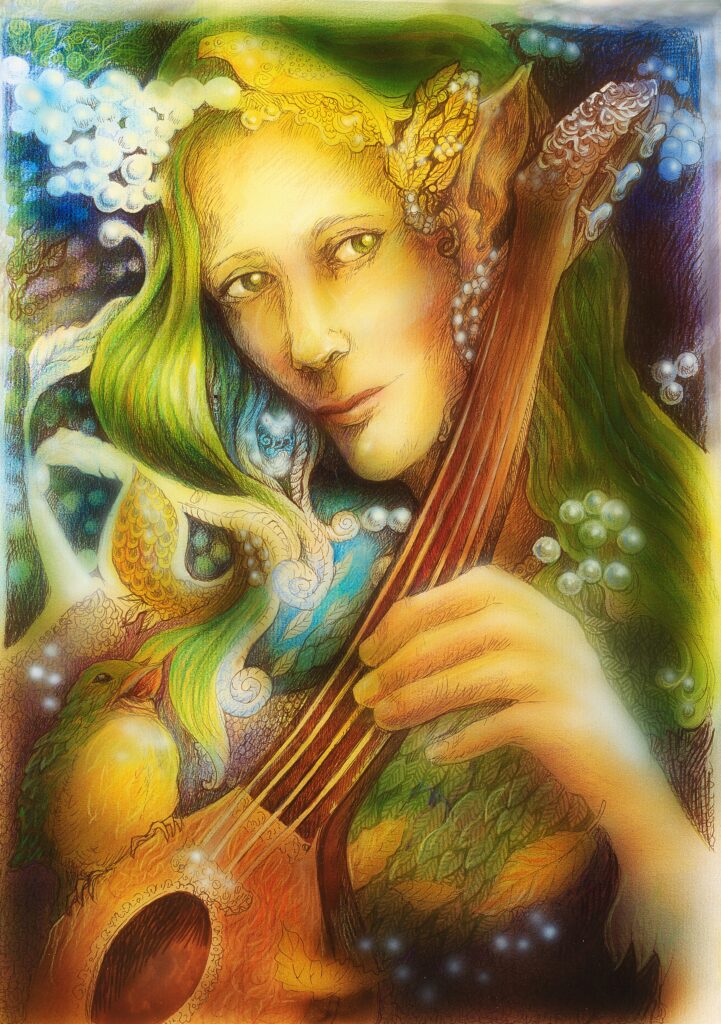 Shaman is a term given to those who heal and advise through entering non-ordinary states of consciousness through trance induced by a wide range of means (many without the use of drugs).
Shaman is a term given to those who heal and advise through entering non-ordinary states of consciousness through trance induced by a wide range of means (many without the use of drugs).
Shamanic technologies originate from many indigenous cultures assist the therapist to access areas of consciousness not readily accessible during ordinary states of awareness.
The Shamanic healer accesses deep intuitive processes through chanting, drumming, humming, meditating, dancing, rocking, fasting, making art, music, being in nature etc.
The mechanism for entry to these states is called the ‘frequency following effect’, in which the heart and brain can literally be encouraged to change frequency of rhythms and waves to follow that of the drumming, music, dancing, chanting etc.
Modern technologies such as mind machines (sound and light machines) and Low Energy Neurofeedback Systems (LENS) have refined the frequency following effect to be able to target specific states and locations of the brain.
For more on LENS, See the work of Dr. Len Ochs at Ochs Labs.
A Shamanic perspective includes an acceptance of reality including much more than the ordinary waking state of awareness can comprehend.
An Australian Shamanic healer is a Philosopher/Educator Zen-Tantric Shaman Deva Daricha, founder of the Centre for human transformation in Victoria.
Also check out this internationally respected shamanic researcher, teacher and author anthropologist Michael Harner.
Stephen Larsen PhD is also an accomplished Shamanic Researcher and proponent of Low Energy Neurofeedback Systems (LENS) who established the Stone Mountain Retreat Centre in the United States.
The varieties of shamanism are almost as numerous as those who practice it, but there are many core practices and elements.
For an excellent explanation of Shamanism from the founder of Core Shamanism, Doctor of Anthropology, Michael Harner visit http://www.shamanism.org/articles/article01.htm
What is Shamanism?
Michael Harner:
The word “shaman” in the original Tungus language refers to a person who makes journeys to non ordinary reality in an altered state of consciousness. Adopting the term in the West was useful because people didn’t know what it meant. Terms like “wizard,” “witch,” “sorcerer,” and “witch doctor” have their own connotations, ambiguities, and preconceptions associated with them. Although the term is from Siberia, the practice of shamanism existed on all inhabited continents.
After years of extensive research, Mircea Eliade, in his book, Shamanism: Archaic Techniques of Ecstasy, concluded that shamanism underlays all the other spiritual traditions on the planet, and that the most distinctive feature of shamanism—but by no means the only one—was the journey to other worlds in an altered state of consciousness.
“…in our culture many consider it avant-garde if a person talks about the mind-body connection, but the fact that the brain is connected to the rest of the body is not the most exciting news. It’s been known for hundreds and thousands of years. What’s really important about shamanism, in my opinion, is that the shaman knows that we are not alone. By that I mean, when one human being compassionately works to relieve the suffering of another, the helping spirits are interested and become involved.”
Shamans are often called “see-ers” (seers), or “people who know” in their tribal languages, because they are involved in a system of knowledge based on first hand experience. Shamanism is not a belief system. It’s based on personal experiments conducted to heal, to get information, or do other things. In fact, if shamans don’t get results, they will no longer be used by people in their tribe. People ask me, “How do you know if somebody’s a shaman?” I say, “It’s simple. Do they journey to other worlds? And do they perform miracles?”
Is shamanism a religion?
The practice of shamanism is a method, not a religion. It coexists with established religions in many cultures. In Siberia, you’ll find shamanism coexisting with Buddhism and Lamaism, and in Japan with Buddhism. It’s true that shamans are often in animistic cultures. Animism means that people believe there are spirits. So in shamanic cultures, where shamans interact with spirits to get results such as healing, it’s no surprise that people believe there are spirits. But the shamans don’t believe in spirits. Shamans talk with them, interact with them. They no more “believe” there are spirits than they “believe” they have a house to live in, or have a family. This is a very important issue because shamanism is not a system of faith.
Shamanism is also not exclusionary. They don’t say, “We have the only healing system.” In a holistic approach to healing, the shaman uses the spiritual means at his or her disposal in cooperation with people in the community who have other techniques such as plant healing, massage, and bone setting. The shaman’s purpose is to help the patient get well, not to prove that his or her system is the only one that works.
In many cultures, shamans are often given gifts for their work, but they will return all the gifts if the patient dies, which I think is a commendable innovation that might help us with the costs of health services today.
What is Shamanism?
“Over tens of thousands of years, our ancient ancestors all over the world discovered how to maximize human abilities of mind and spirit for healing and problem-solving. The remarkable system of methods they developed is today known as “shamanism,” a term that comes from a Siberian tribal word for its therapists: “shaman” (pronounced SHAH-mahn). Shamans are especially distinguished by the use of journeys to hidden worlds otherwise mainly known through myth, dream, and near-death experiences.” Michael Harner
See also our link to Transpersonal Psychology.
The complete idiot’s guide to shamanism, written by Sociologist, Anthropologist, Lawyer, writer Ginni Graham Scott, Ph. D. and other titles by her might be of interest. Please click here to visit the book link.



